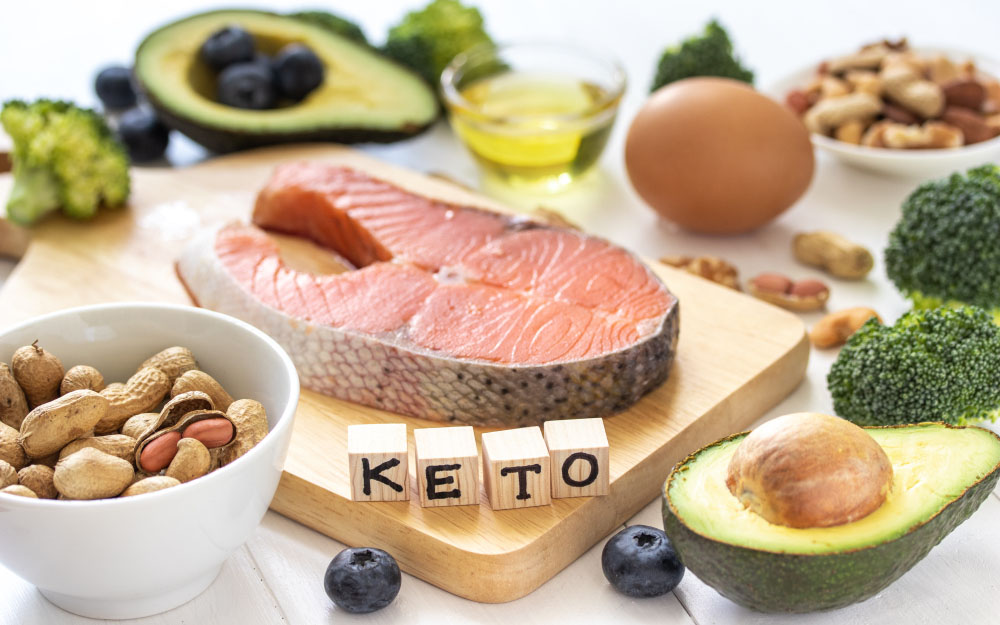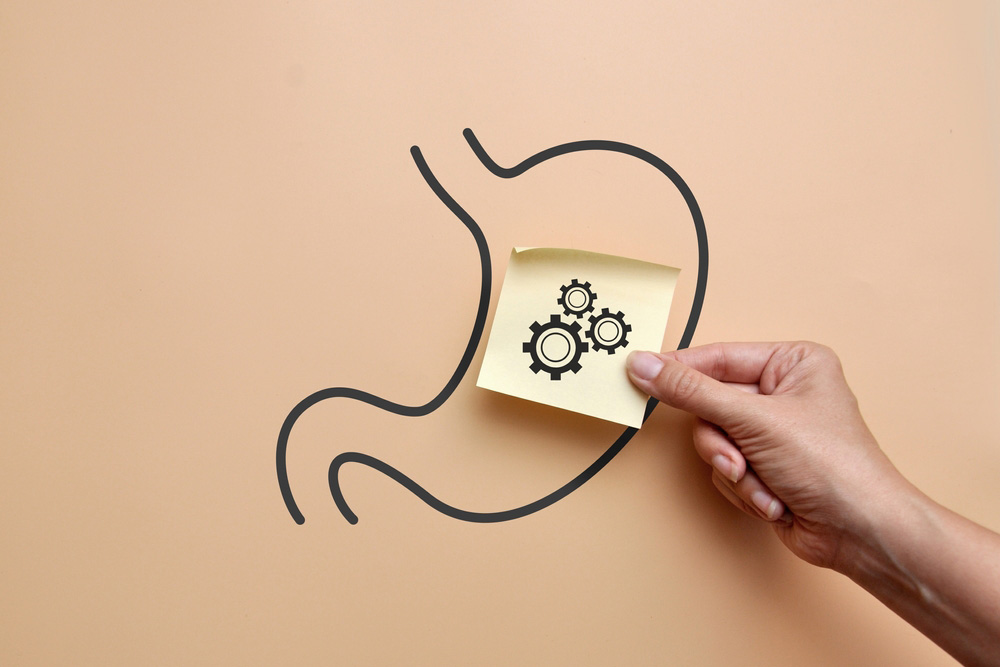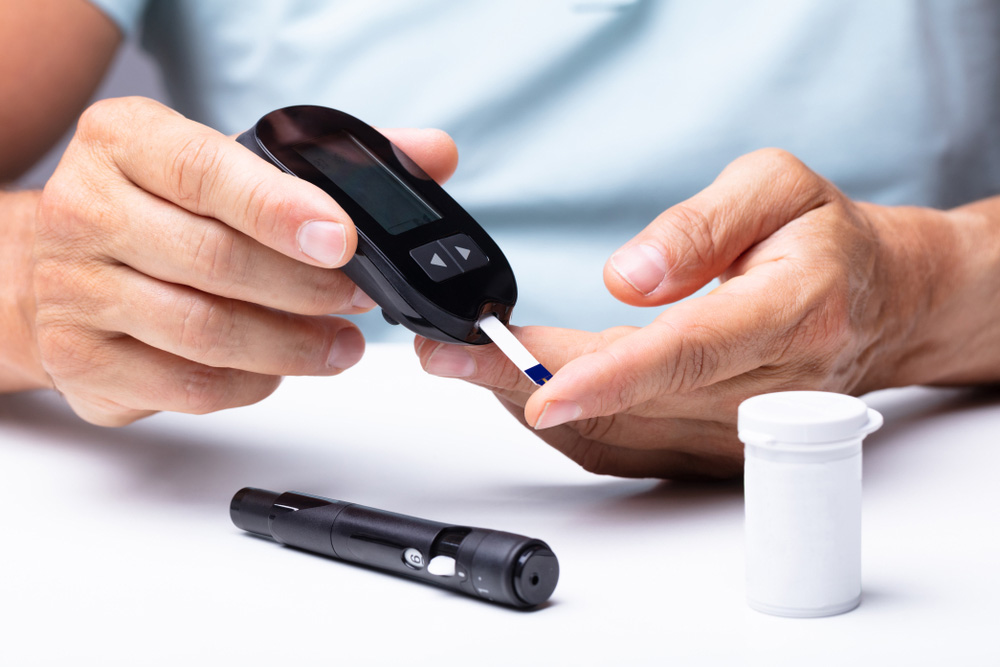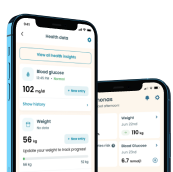Keto Diet & Diabetic Ketoacidosis: What’s the Relationship?
Over 400 million people live with diabetes worldwide; each year, about 1.5 million of these cases result in death. According to the American Diabetes Association (ADA), a staggering 37.3 million Americans—about 11.3% of the entire populace—had the illness in 2019.

Over 400 million people live with diabetes worldwide; each year, about 1.5 million of these cases result in death. According to the American Diabetes Association (ADA), a staggering 37.3 million Americans—about 11.3% of the entire populace—had the illness in 2019.
Diabetes occurs due to high blood sugar levels experienced due to the body’s inability to produce or use the already available insulin. Over time, this illness results in complications including cardiovascular disease (heart attack, stroke, coronary artery disease), eye damage, kidney damage, etc. Sometimes these complications can develop rapidly; one of such is diabetic ketoacidosis (DKA).
So far, there has been no cure for this illness. However, several treatment techniques have been developed to help manage and control this condition. These include insulin injections, tablets, medication, weight loss surgery, a proper diet plan, routine exercise, etc.
As effective as some of these techniques are, they can carry significant side effects if not properly implemented. A recent one popularized by scientific backing is the keto diet. It’s indeed proven helpful to people with diabetes and is most effective for people looking to control their blood sugar levels and lead a healthier lifestyle. Sadly, this diet has a significant side effect that many might be unaware of — diabetic ketoacidosis (DKA).
Simply put, DKA is an acute medical condition that occurs due to high levels of ketones in the body. Usually, it occurs more often in people with type 1 diabetes. Nonetheless, it can also occur in people with type 2 diabetes or even people that don’t have the illness. And here’s the bummer — it can be life-threatening.
In light of these realities, this guide focuses on how the ketogenic diet can potentially lead to diabetic ketoacidosis (DKA). Here, you’ll understand exactly what diabetic ketoacidosis is and how this serious complication can stem from the keto diet. After diagnosis, you’ll also learn how to manage or prevent this condition and what to eat.
What to Expect
- A Breakdown of the Metabolic Pathways
- Details About the Ketogenic Diet
- Ketosis vs. Ketoacidosis: What’s the Difference?
- Research Linking the Keto Diet to Ketoacidosis
- Common Diabetic Ketoacidosis Symptoms
- Other Causes of Diabetic Ketoacidosis
- How to Prevent the Development of Diabetic Ketoacidosis
- What to Eat After Diabetic Ketoacidosis Diagnosis
A Breakdown of the Metabolic Pathways

To start with, let’s explicitly describe how your body undergoes metabolization. The body generally observes two major metabolic pathways, depending on the diet you consume — glycolysis and ketosis. Scientists have carefully observed that changing what you eat can effectively aid metabolic pathways, which have different benefits and pitfalls. Let’s take a closer look at these two.
Glycolysis
Simply put, glycolysis involves a series of reactions that lead to energy extraction from glucose. Most people’s diet comprises a medium to a high amount of carbohydrates; hence, they get their energy from carbs.
The human body is naturally predisposed to this particular metabolic pathway. Your body breaks down carbohydrates into glucose which is further converted into glycogen stored in the liver and muscles. The stored glycogen is released to supply energy needs when needed.
Ketosis
Sometimes, your body runs low on glucose levels, making glycolysis practically impossible. When this happens, the body starts burning fat as fuel instead via a process known as ketosis.
This metabolic process—ketosis—involves the body breaking down fat into ketones, which serve as an alternative energy source to the body in the absence of glycogen. Although it can occur naturally, it’s popularly induced as a weight-loss technique, especially in people with diabetes. It features other health benefits, including reduced risk of heart disease, seizure prevention in people with epilepsy, reduced insulin resistance, and more.
However, people with diabetes need to be wary of the number of carbohydrates they consume. A person with diabetes who consumes too many carbohydrates may experience rising blood sugar levels, which is harmful to their health. Hence, several alternative diet options are often considered, the most popular being the ketogenic diet.
So, what exactly is the ketogenic diet? Find out in the next section.
Details About the Ketogenic Diet

Glucose is the major supplier of energy to the body system. However, when this supply runs low, the body switches to the other metabolic pathway (ketosis). Scientists figured out that this other process is effective for certain illnesses, including epilepsy and diabetes. Considering this revelation, they created a diet plan to induce ketosis carefully and reap its many benefits.
The ketogenic diet is often associated with other low-carb diets like Atkins, paleo, and Dukan. They all involve reducing carb intake to its barest minimum while complimenting its absence with other foods like protein or fat. Specifically, the keto diet is a high-fat diet with a blend of protein and carbohydrates.
Lately, it’s been popularized among people with diabetes for its effectiveness in inducing weight loss. Obesity is one of the risk factors for diabetes which makes losing weight pertinent. However, many individuals often find it challenging to go through the exercise route of losing weight and prefer opting for a diet plan that helps do this easily. The keto diet is one such diet plan that has proven effective over time.
How Does the Ketogenic Diet Work?
The effectiveness of this diet is predicated on reducing the glucose amount in the body and replacing it with other healthy energy sources. It entails a standard meal rich in healthy fat and protein with little carbohydrate content.
When the body exhausts its glucose reserve, usually stored in the liver, it opts for fat as its primary fuel via a process known as ketosis. This transition can take about 3–4 days, depending on the reserve glucose present.
This process produces ketones as by products of the metabolism. It’s important to mention that ketosis occurs naturally, sometimes due to strenuous exercise or fasting. Various types of ketogenic diets exist, which vary depending on the ratio employed.
As beneficial as this diet is, it has one major side effect, which can be life-threatening when not adequately managed. Notably, prolonged ketosis can lead to a condition known as ketoacidosis. Simply put, this phenomenon occurs when too many ketones exist in the body, so it lessens the pH level.
Ketosis vs. Ketoacidosis: What’s the Difference?

Although these terms look quite similar, they stand for entirely different things. Ketosis and ketoacidosis are both linked to the term “ketones.”
As mentioned above, ketosis is when the body burns fat to generate energy, producing ketones. You can experience ketosis briefly when fasting or if your body is low on glucose. However, it’s usually induced via the ketogenic diet to tackle illnesses like diabetes, heart disease, cancer, etc.
On the other hand, ketoacidosis occurs due to the accumulation of ketones in the body. When these ketones reach a certain level, they make the blood acidic, potentially having life-threatening effects on the individual. This medical complication is common in people with type 1 diabetes. It can also be a side effect of the ketogenic diet, especially when not managed properly. Still, it can occur due to other reasons.
Statistics indicate that over 100,000 yearly hospital admissions in the US are due to cases of diabetic ketoacidosis. According to a paper titled “Diabetic Ketoacidosis: Risk Factors and Management Strategies,” people with type 1 diabetes are more prone to developing ketoacidosis due to the inability of their bodies to produce insulin.
The insulin hormone aids the body in properly utilizing glucose. However, in its absence, the body system can’t use this energy source and uses fat instead. This leads to the production of ketones, a chemical from breaking down fats. Eventually, ketones accumulate in the bloodstream over time, alongside glucose, to trigger a condition scientists refer to as diabetic ketoacidosis (DKA).
The keto diet reduces the body’s need for insulin by introducing an alternate energy source. When little to no insulin is present, the body can’t use the glucose it produces, contributing to blood sugar rise.
Research Linking the Keto Diet to Ketoacidosis

Diabetic ketoacidosis can occur for several reasons; however, some studies reveal the ketogenic diet causes diabetic ketoacidosis in some people. Although this doesn’t happen often, poor diet implementation can lead to this complication.
According to a 2020 publication, a type 1 diabetes patient reported to the hospital complaining of several symptoms, including stomach pain, vomiting, fatigue, weakness, and dizziness. He was 28 years at the time of occurrence and had been placed on insulin when he was diagnosed at 10. He failed to conduct regular blood tests to determine his blood sugar levels and instead relied on symptoms like blurry vision or diaphoresis to know when his blood glucose digressed from optimal.
Although he was previously non-compliant with any diabetic diet, he reported taking on a strict ketogenic diet plan just a week before coming down with these symptoms. On examination, he had his blood and blood pressure checked alongside other necessary tests. These tests indicated he had euglycemic diabetic ketoacidosis — DKA occurring without high blood sugar.
The patient’s condition was managed by aggressive hydration and electrolyte repletion. He was also given insulin during treatment to preclude normoglycemia. Remarkably, his symptoms significantly improved the next day.
Health professionals prescribed a diabetic diet with consistent carbs, which increased his blood glucose level. Afterward, he underwent a diet review that required him to eat thrice daily and had his insulin dose adjusted. His condition had significantly improved by the third day, with his blood glucose at optimal levels. The patient was then discharged on insulin glargine and regularly advised to check in with a professional endocrinologist.
Cases of ketoacidosis resulting from adopting a keto diet have also been reported among non-diabetes patients. Although rare, non-diabetic ketoacidosis occurs due to starvation or an extreme diet of incredibly low carbohydrate content like the keto diet.
A case of non-diabetic ketoacidosis was observed in a 32-year-old woman who experienced nausea and vomiting 10 days after starting a low-carbohydrate, high-fat diet. At the time, she was breastfeeding her ten-month-old son.
After conducting the necessary tests, the result pointed to ketoacidosis. The patient was then administered fluids and insulin. Following a quick recovery, she was discharged three days later.
These reports imply that the ketogenic diet can prompt ketoacidosis in those with diabetes and non-diabetes patients. Hence, it’s essential for those implementing this diet plan to be cautious. The next section outlines the common symptoms that might indicate a case of ketoacidosis.
Common Diabetic Ketoacidosis Symptoms




Diabetic ketoacidosis usually occurs within a significantly short time frame, sometimes within 24 hours. Therefore, you might overlook some of these symptoms if you’re not paying attention. Here are some signs and symptoms commonly associated with diabetic ketoacidosis:
Early symptoms include:
- Frequent peeing
- Thirst
- Hyperglycemia (high blood sugar level)
Over time, more troubling symptoms may ensue, including:
- Stomach pain
- Nausea and vomiting
- Weakness
- Rapid breathing
- Shortness of breath
- Dry skin
- Fruity smelling breath
- Confusion
You can experience some or all of these signs within a short window. It’s critical to take note of these symptoms early enough to be able to prevent diabetic ketoacidosis from becoming life-threatening. When not managed early enough, diabetic acidosis can lead to diabetic coma or even death. If you experience any of the above symptoms, do well to visit the nearest emergency room.
Other Causes of Diabetic Ketoacidosis

The ketogenic diet isn’t the only cause of DKA, as some events may trigger it. When properly implemented, the keto diet is relatively safe and might not lead to serious diabetes complications. Nonetheless, you need to be cautious when implementing these popularized meal plans, especially if you’ve already been diagnosed with diabetes.
Here are some other known causes of diabetic ketoacidosis:
The Recently Discovered Auto Immunogenicity of Type 1 Diabetes
Type 1 diabetes is an autoimmune disease that often destroys insulin-producing beta cells. It’s termed insulin-dependent diabetes mellitus (IDDM), as the condition significantly depletes the body’s insulin level.
People with type 1 diabetes often tend to experience diabetic ketoacidosis as a complication of the illness. This makes more sense when considering that DKA occurs due to a lack or limited amount of insulin. Sometimes, patients that develop DKA get diagnosed with type 1 diabetes for the first time.
Missing Insulin Doses
If you have an insulin pump or get regular insulin injections, you most likely have insulin-dependent diabetes. Missing your insulin doses can bring about severe complications like DKA. Your body needs regular insulin injections to compensate for the deficiency it experiences due to diabetes. As your insulin level gets low, the risk of developing diabetic ketoacidosis increases.
Expired or Spoiled Insulin
Just like any other medical product, insulin usually bears an expiration date. Using expired insulin can trigger DKA. Also, keeping insulin in places with extreme temperatures can render it ineffective.
When insulin doesn’t work as it’s supposed to, you don’t get the right amount of insulin dose. Consequently, your blood sugar level rises, quickly leading to diabetic ketoacidosis.
Problem With the Insulin Pump
A broken or improperly installed insulin pump will prevent insulin from entering your system or reduce the amount delivered to the body. This can potentially lower insulin levels in the body, giving room for DKA development.
Illness or Infection
When you’re down with certain illnesses or infections, your body undergoes stress, releasing hormones like cortisol and adrenaline. During these times, your body needs more insulin than usual. Unfortunately, these infections make it harder for the body to produce enough insulin or use the available ones.
Pregnancy
The pregnancy period is associated with a range of unwanted sicknesses and reactions. Also, during this gestation period, the mother requires more insulin, especially for those diagnosed with diabetes. Engaging in diets that reduce insulin levels in the body might increase the risk of diabetic ketoacidosis.
Some other risk factors of DKA include:
- Alcohol or drug abuse
- Heart attack or stroke
- Certain medications (e.g., pentamidine, corticosteroids, clozapine, and SGLT2 inhibitors like dapagliflozin, canagliflozin, and empagliflozin)
How to Prevent the Development of Diabetic Ketoacidosis

The best diabetic ketoacidosis treatment that wouldn’t involve hospital admission and fluid therapy are those that prevent DKA from occurring. They’re more beneficial if you figure out some of its symptoms early enough.
However, watching out for symptoms might not be as effective as actively ensuring you don’t slack off your diabetes management. Here are ways you can guide against complications like DKA.
Maintain Proper Insulin Therapy
People with type 1 diabetes usually need to pay more attention to their insulin therapy as they can easily run low on their reserves if they don’t follow this diabetes treatment plan carefully. Hence, endeavor to check your insulin pump regularly for leaks or damages. Ensure the insulin flows right through the tubing and isn’t blocked or disconnected.
Also, you should check for your insulin’s expiration date to ensure your insulin doses are effective. If you don’t have this information, check with your healthcare provider.
Finally, ensure you don’t store your insulin in extreme temperatures to avoid compromising its integrity. Doing all these will help avoid serious complications that can result from diabetes.
Regularly Check Your Blood Sugar Level
Very high blood sugar is often linked to cases of diabetic ketoacidosis, underscoring the need to check your blood sugar regularly. Good blood sugar control effectively manages your diabetes condition, thereby avoiding complications resulting from this illness.
Use a blood glucose meter to check your blood glucose level from home, before meals, or at bedtime. This’ll indicate if you have low blood sugar or if your sugar level has skyrocketed.
Take Your Diabetes Medicine on Time
Depending on your type of diabetes, you may need to take certain prescription medications. Skipping your daily medication or not taking it correctly can put you at risk of developing complications like DKA. That said, ensure you take your drugs as directed by your doctor.
Do Regular Ketone Tests
Properly monitoring your body’s ketone level is an excellent move in preventing or reducing your risk of developing DKA. You can figure this out by undergoing a urine or blood test and opting for both.
Luckily, you don’t have to run to the nearest emergency room to undergo these tests. Now readily available kits can help you determine your ketone level even in the comfort of your room.
You can purchase a urine ketone test kit at your local pharmacy and follow the instructions on the package. Usually, it’s a strip that you pee on. This strip will turn a certain color, indicating the level of ketones in your body.
Likewise, several blood glucose meters can effectively check the number of ketones present in your blood. So, you can check your blood sugar levels and ketones with just a drop of blood. You should regularly check these factors to be safe. If you notice your blood ketone level is higher than the normal range, you might need to see your doctor.
Use Mobile Applications That Aid Diabetes Management
Technology has made lots of things more accessible in the healthcare space. You can now monitor essential vitals by tapping away at your smartphone. There are some diabetes management applications that have emerged to help better manage this illness.
Klinio is one of the top diabetes management applications available for people with diabetes and those at risk of developing the illness. With this application, you can properly monitor your blood glucose level, access the right meal plan, and even get carefully tailored exercise routines.
What to Eat After Diabetic Ketoacidosis Diagnosis

If you’ve developed ketoacidosis following the adoption of the ketogenic meal plan, you might be skeptical of continuing with this kind of diet. That’s for a good reason, as furthering down this path can potentially increase your risk of developing this complication again.
One question lingers: “What do you eat after experiencing diabetic ketoacidosis?” Thankfully, the answer to this question isn’t as complicated as it might seem.
Understandably, continuing the keto diet might not be the best choice as it can exacerbate your condition. You might want to lay off on this diet and consider healthier options that don’t contribute to excessively high levels of ketones in the body.
For starters, drink lots of fluids—like water or sugar-free drinks—to keep your body properly hydrated. Also, avoid drinking alcohol as this can potentially increase your risk of developing DKA.
According to research, a diet high in fiber could reduce the risk of DKA hospitalization. Fiber is considered a healthy carbohydrate and can be a great alternative to foods that can potentially lead to high blood sugar levels. As such, you can opt for food rich in fiber when recovering from a case of diabetic ketoacidosis.
Summing It Up

Diabetes is an illness that can sneak up on you if you don’t pay enough attention. It requires careful management to prevent complications and also lead a healthy lifestyle. As discussed in this guide, some diets like the ketogenic diet can potentially put you at risk of developing diabetic ketoacidosis. Hence, you must exercise caution when implementing such a diet and look out for DKA symptoms while at it.
DKA can also occur due to other factors, including pregnancy, certain medications, etc. You need an excellent diabetes management plan to help you navigate through the testing waters of this illness. Our Klinio app is one of the expert-recommended diabetes management apps out there. It offers so much more than just the right diet plan for diabetes; you have at your disposal an encompassing self-care tool you can use to manage your condition better.
Take a quiz and get your diabetes-management plan today!








